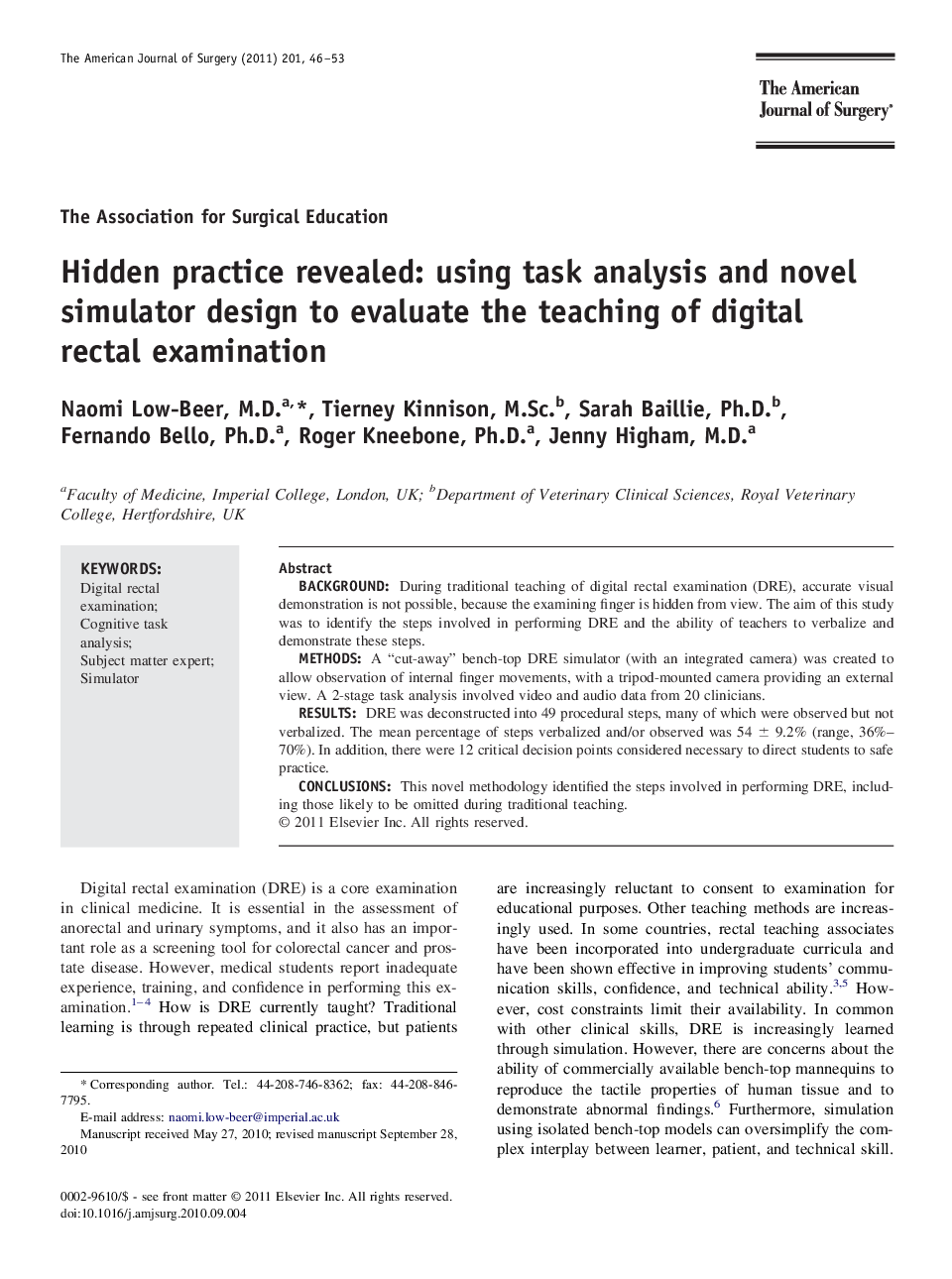| Article ID | Journal | Published Year | Pages | File Type |
|---|---|---|---|---|
| 4280115 | The American Journal of Surgery | 2011 | 8 Pages |
BackgroundDuring traditional teaching of digital rectal examination (DRE), accurate visual demonstration is not possible, because the examining finger is hidden from view. The aim of this study was to identify the steps involved in performing DRE and the ability of teachers to verbalize and demonstrate these steps.MethodsA “cut-away” bench-top DRE simulator (with an integrated camera) was created to allow observation of internal finger movements, with a tripod-mounted camera providing an external view. A 2-stage task analysis involved video and audio data from 20 clinicians.ResultsDRE was deconstructed into 49 procedural steps, many of which were observed but not verbalized. The mean percentage of steps verbalized and/or observed was 54 ± 9.2% (range, 36%–70%). In addition, there were 12 critical decision points considered necessary to direct students to safe practice.ConclusionsThis novel methodology identified the steps involved in performing DRE, including those likely to be omitted during traditional teaching.
